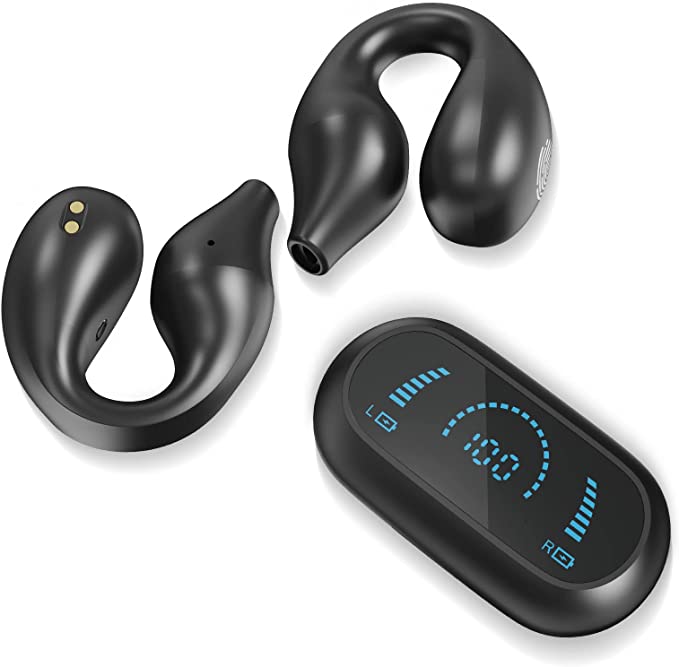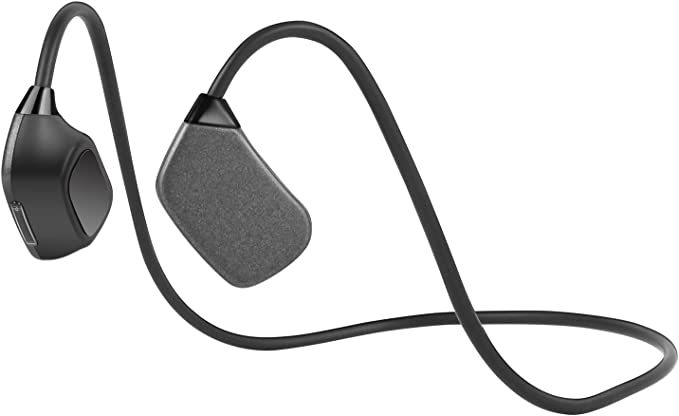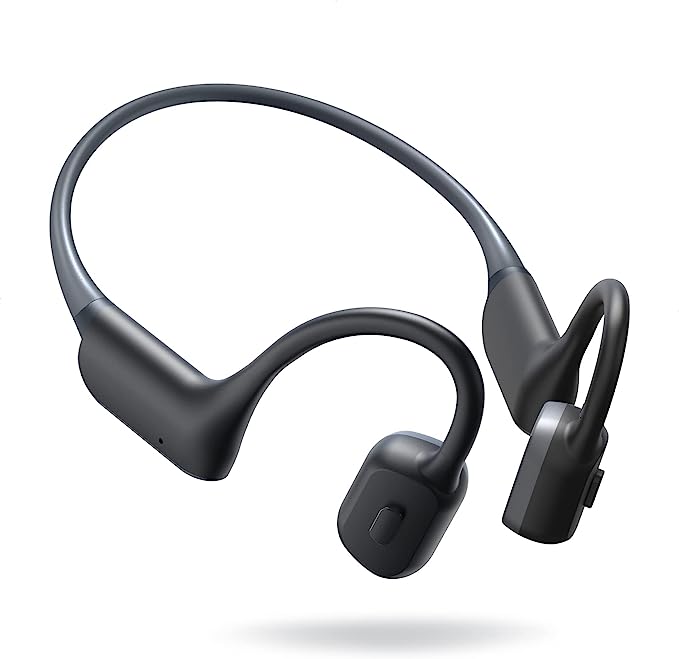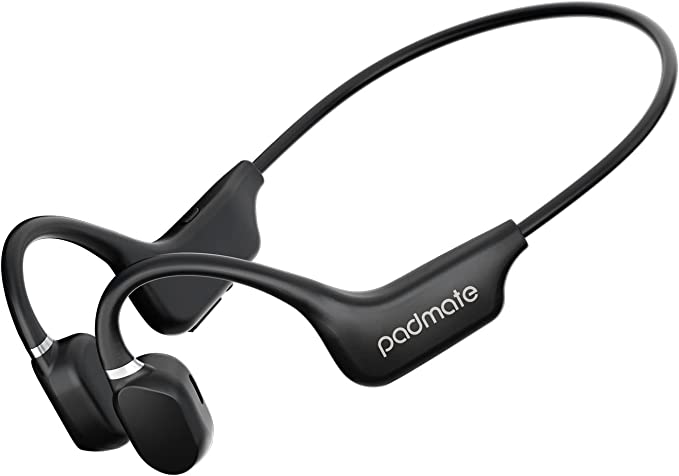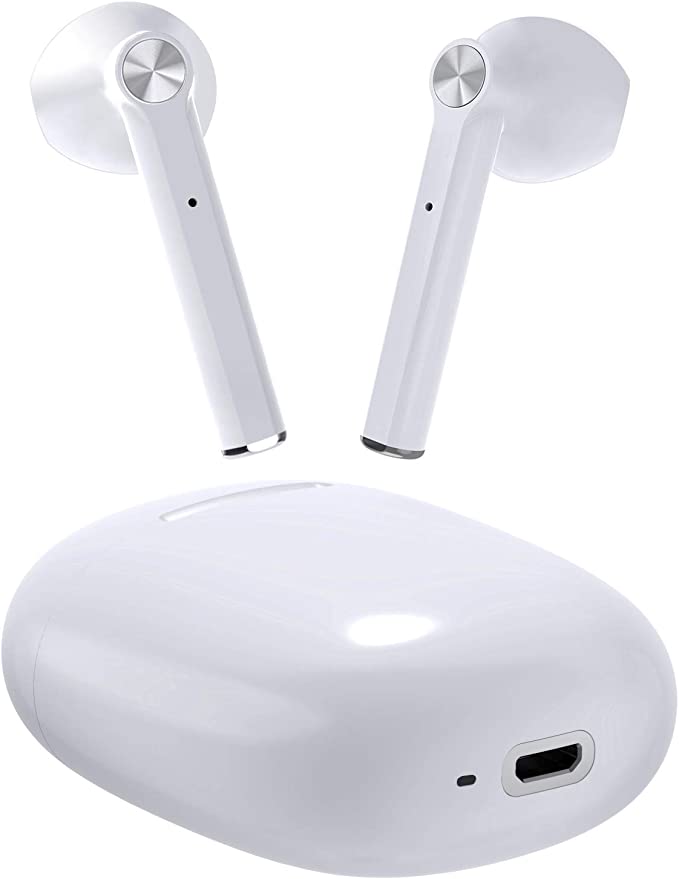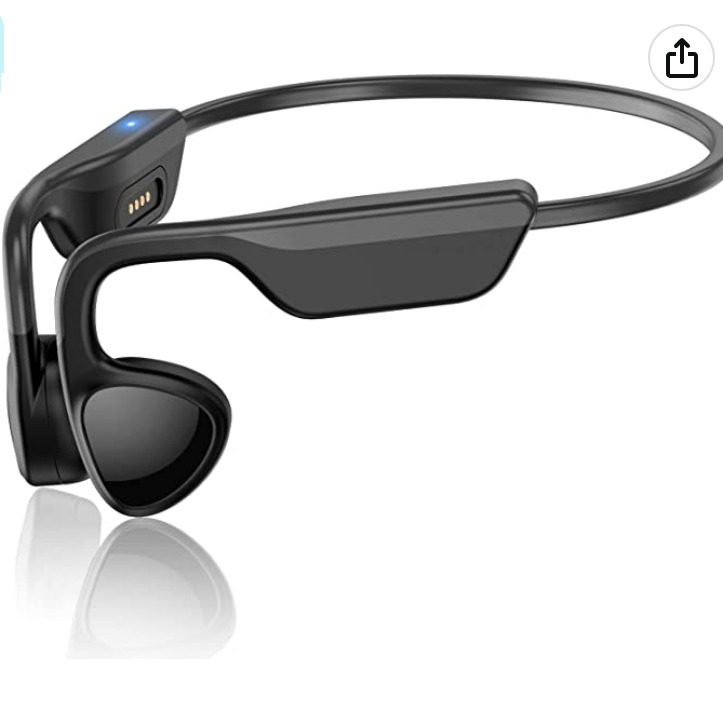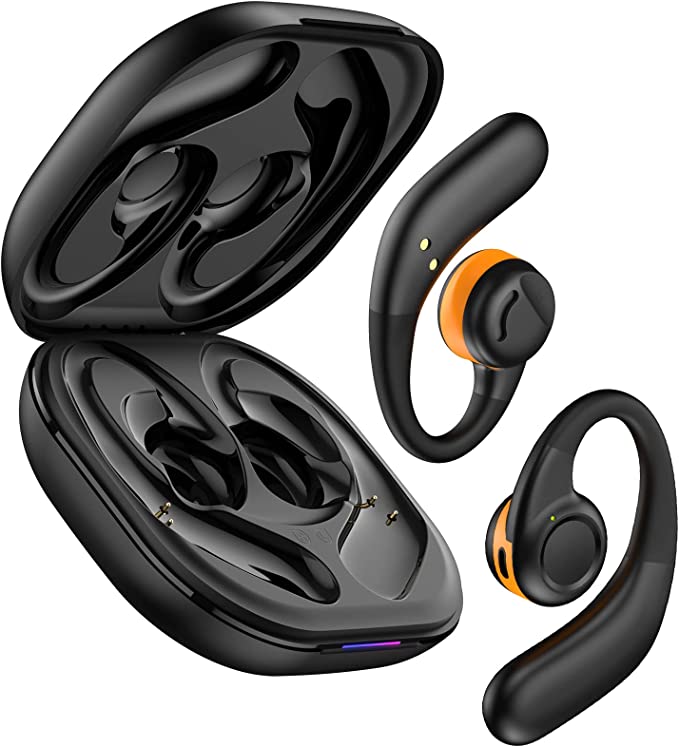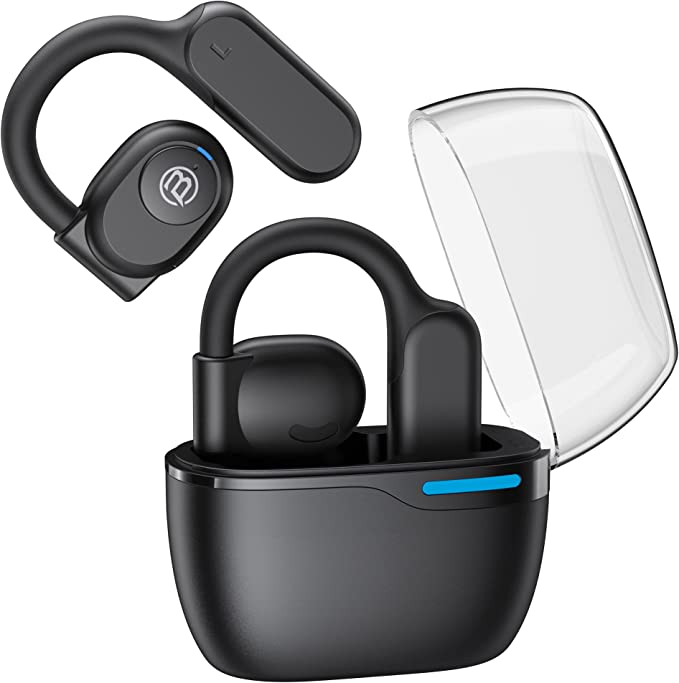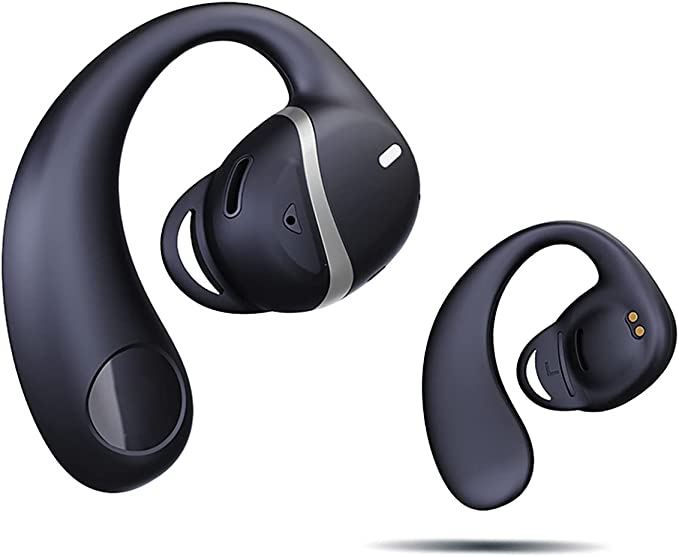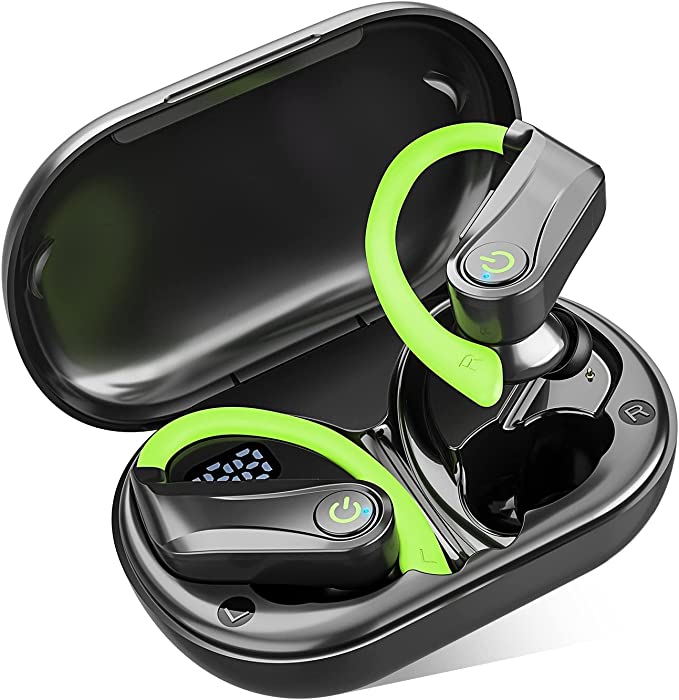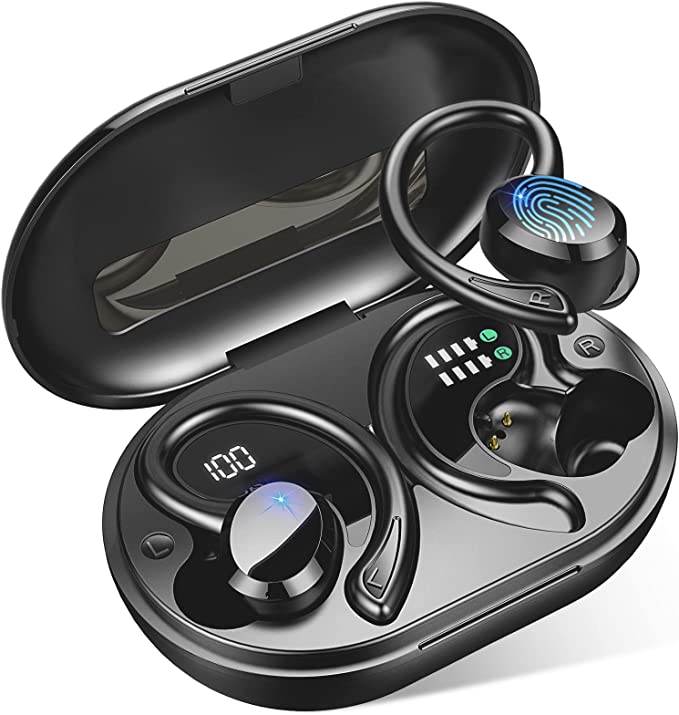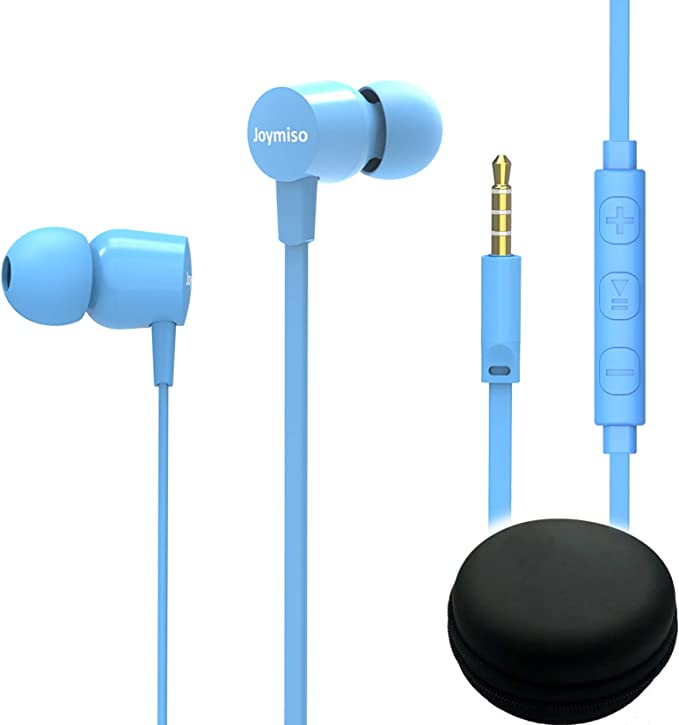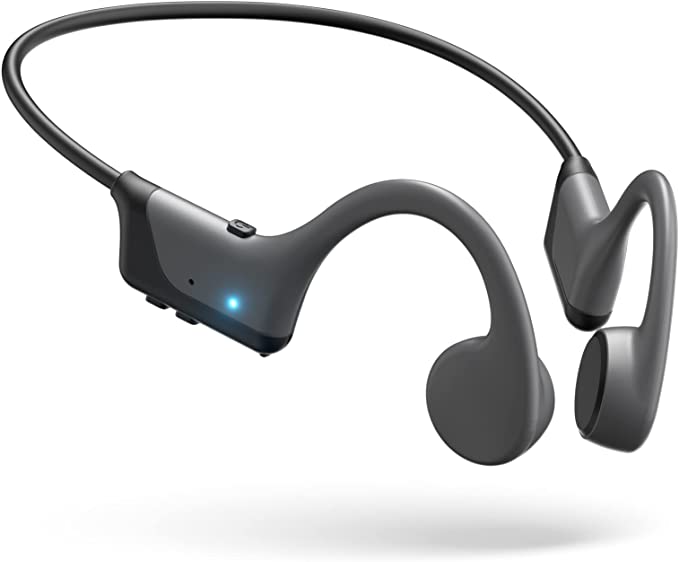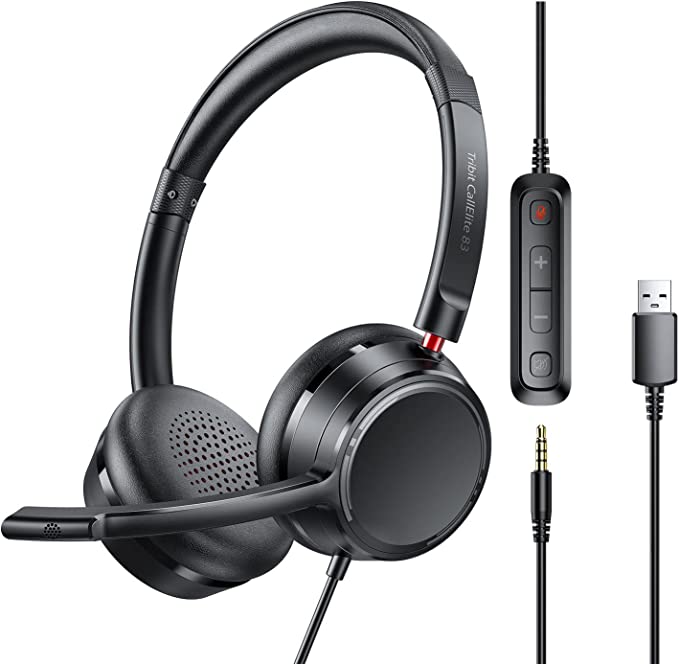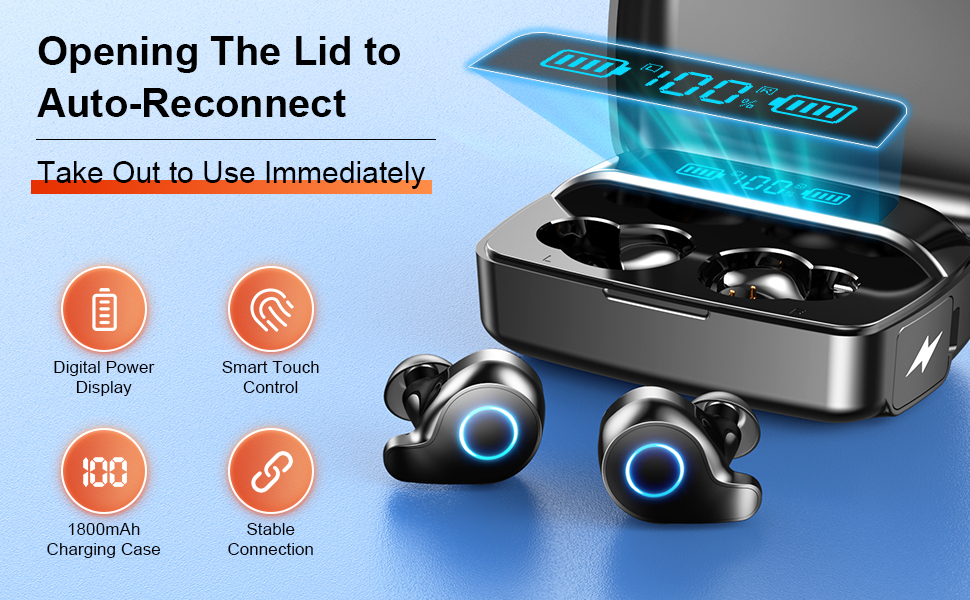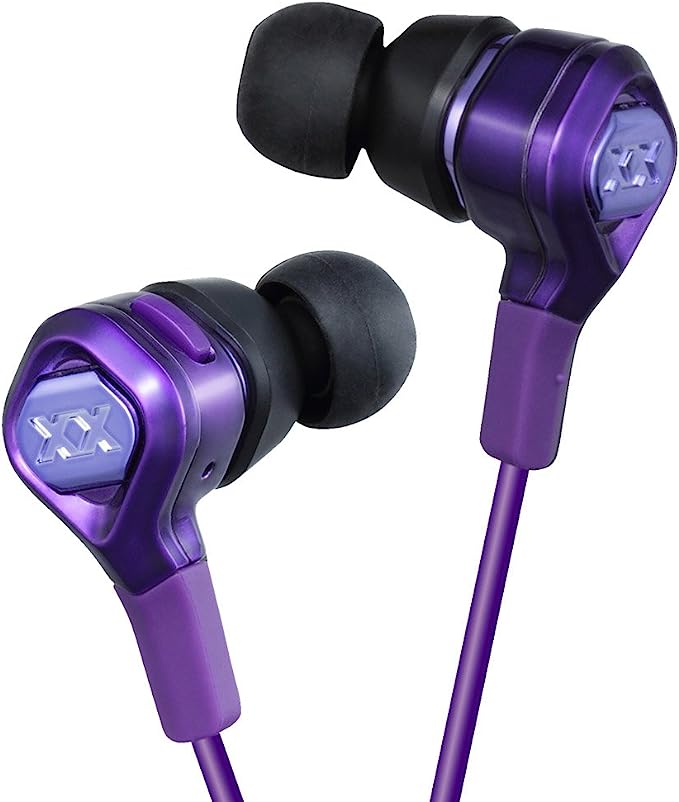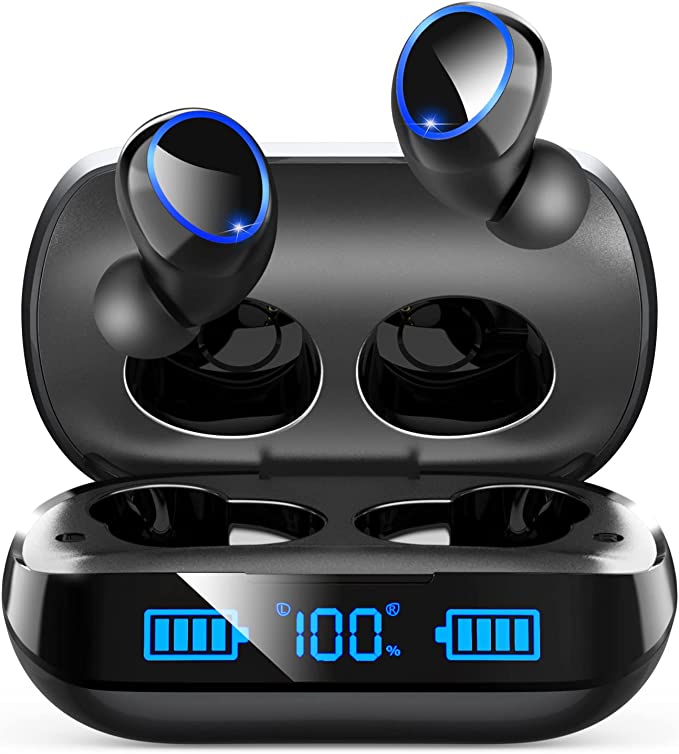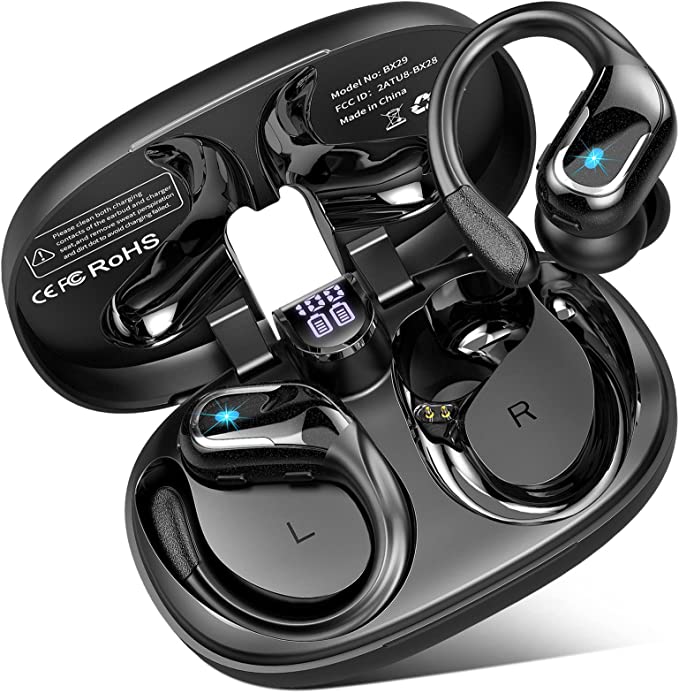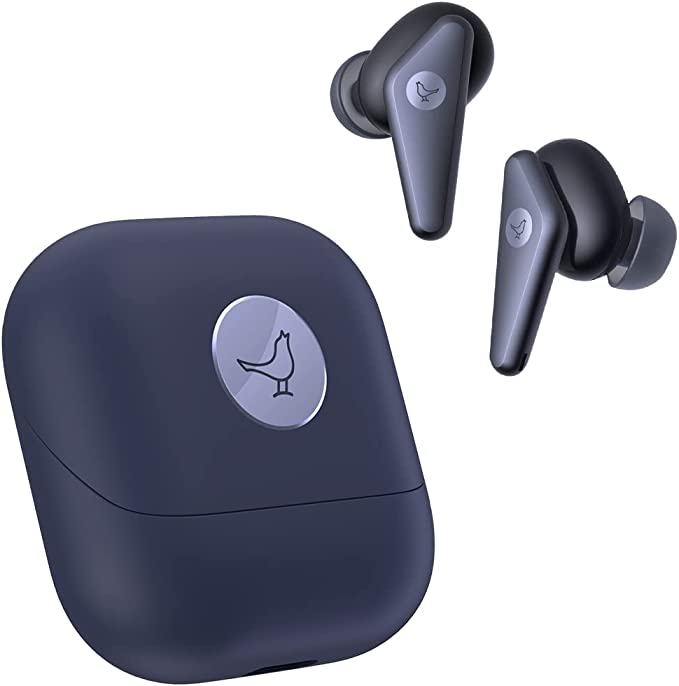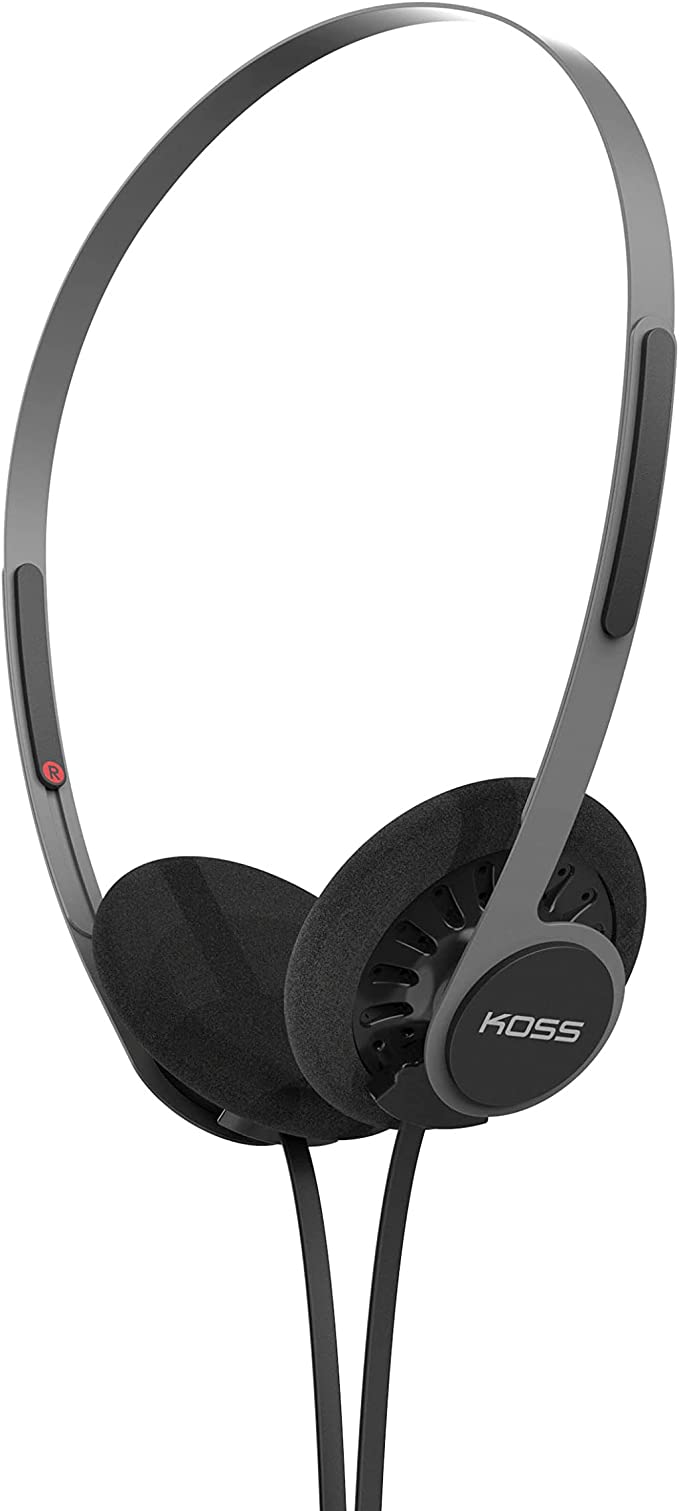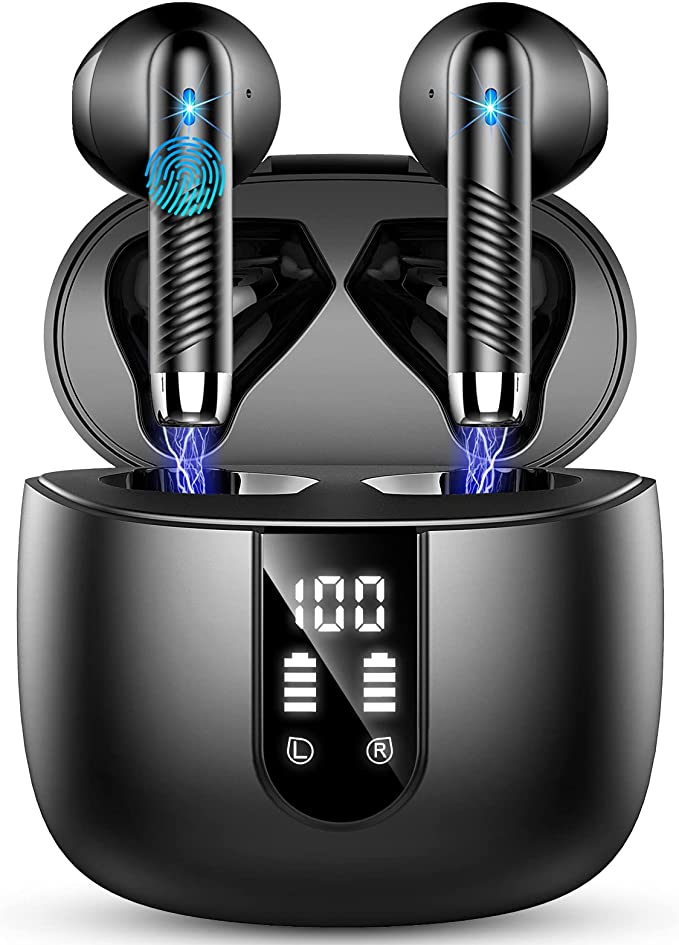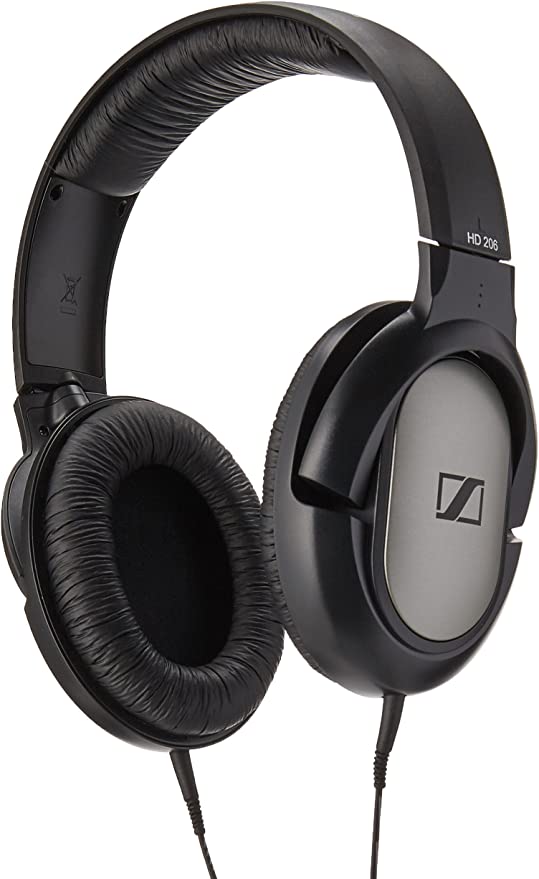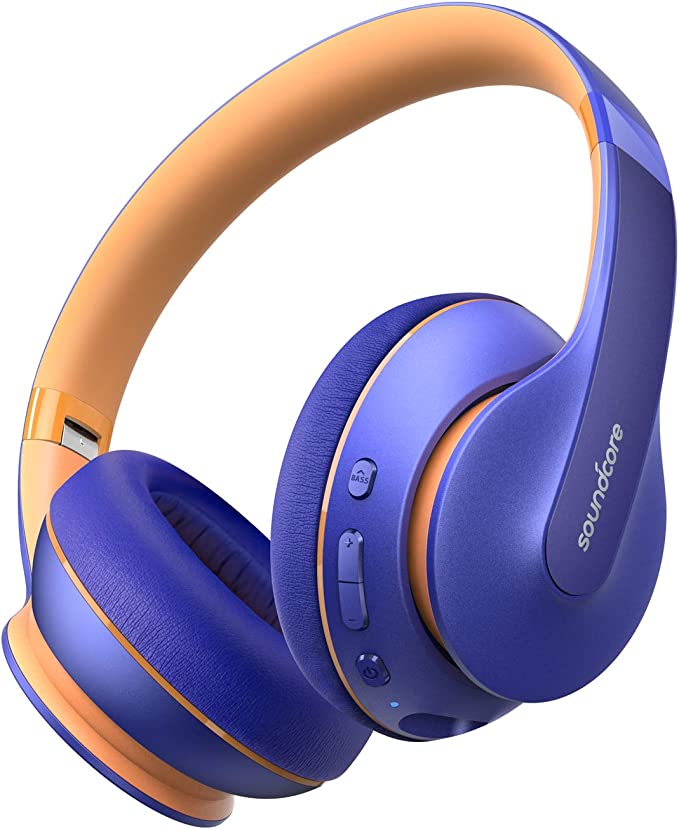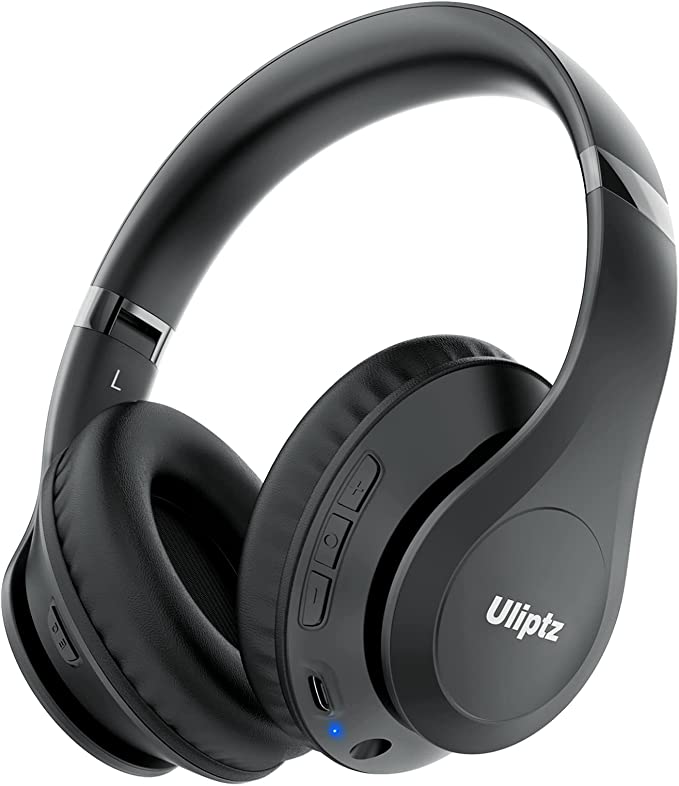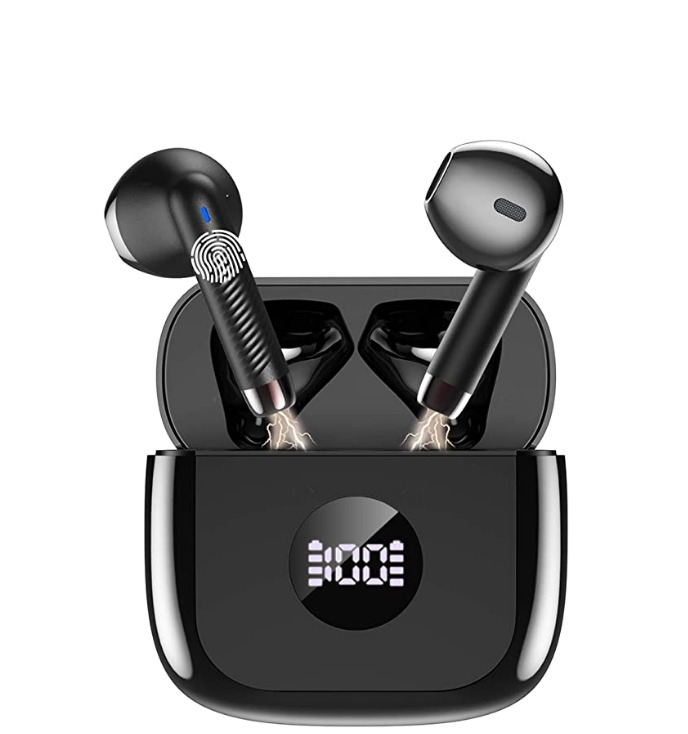TOZO O2 OpenBuds Review: The Science of Aware Audio & Ergonomic Freedom
Update on May 29, 2025, 12:54 p.m.
In our hyper-connected, ever-buzzing world, finding a moment for ourselves, for our favorite music or an engaging podcast, is a cherished ritual. Yet, the desire to be immersed in our personal audio often clashes with a fundamental need: to remain aware, connected, and safe within our surroundings. Imagine trying to enjoy a new album while navigating a busy city street, or needing to hear your name called in an open office while trying to focus. This is the modern listener’s dilemma. But what if you could have both? What if your soundtrack didn’t have to mean a soundproof wall? This is where the burgeoning world of open-ear audio steps in, and a compelling example of this thoughtful technology is the TOZO O2 True Open Ear Wireless Headphones, or as they’re known by their model name, the TOZO OpenBuds. These aren’t just another pair of earbuds; they represent a sophisticated approach to harmonizing your personal soundscape with the symphony of life around you.
The concept of unoccluded listening isn’t entirely new; early acoustic aids and telephone earpieces, by their very nature, didn’t seal the ear. However, the deliberate design of high-fidelity open-ear audio for everyday consumers is a more recent evolution, driven by our increasingly mobile and multi-tasking lifestyles. Unlike traditional in-ear buds that create a seal within your ear canal, or bulky over-ear headphones that cup your entire ear, open-ear headphones like the TOZO O2 rest gently outside the ear canal. This seemingly simple difference is a gateway to a profoundly different listening experience, built on a foundation of scientific understanding about sound, hearing, and human interaction with the environment. Sound itself, in its most basic (1) scientific definition, is a vibration that propagates as an acoustic wave through a transmission medium such as air. When these waves reach our ears, they embark on a complex journey through the outer, middle, and inner ear, eventually being interpreted by our brain as the sounds we recognize. Open-ear designs allow this process to occur for both your chosen audio and the ambient sounds of your environment, simultaneously.

The Architecture of Awareness: Understanding the Open-Ear Design
The cornerstone of the TOZO O2 OpenBuds is, quite literally, their “Open Ear Design.” This design philosophy is about more than just physical form; it’s about fostering a continuous and safe interaction with your environment. The product page for the TOZO O2 emphasizes that this design is “engineered for both comfort and safety, offering a breathable and open fit.”
How does this translate scientifically to enhanced awareness? The field of cognitive science offers valuable insights here, particularly through a concept known as (2) Situational Awareness. Popularized by researchers like Dr. Mica Endsley, situational awareness involves three stages: perceiving elements in the environment, comprehending their meaning, and projecting their status into the near future. For a cyclist, this means not just hearing a car horn (perception), but understanding it’s a warning (comprehension), and predicting the car’s likely path to take evasive action (projection). By leaving the ear canal unobstructed, open-ear headphones allow critical auditory cues from your surroundings – traffic sounds, approaching footsteps, public announcements, a colleague’s question – to reach your eardrums naturally. This is paramount for safety, especially in dynamic environments like city streets or when exercising outdoors. General safety advice consistently highlights the dangers of being acoustically isolated in such situations.
Beyond the critical aspect of safety, the open-ear approach offers a significant boost in long-term comfort. Many users of traditional in-ear earbuds report a sensation of pressure, heat, or the “occlusion effect” – a phenomenon where your own voice sounds boomy or hollow because the ear canal is blocked. The TOZO O2’s design inherently mitigates these issues. By allowing air to circulate freely, it reduces moisture build-up and pressure, making them suitable for “extended listening sessions,” as the product description notes. This aligns with recommendations from organizations like the (3) World Health Organization (WHO) regarding safe listening practices, which, while primarily focused on volume and duration, implicitly support designs that don’t encourage excessive volume to overcome a physical seal, especially if ambient awareness is also a goal. The (4) average human hearing range spans from approximately 20 Hertz (Hz) to 20,000 Hz, and an open design allows the ear to naturally process this full spectrum of environmental sounds alongside the directed audio from the headphones.

The Custom-Fit Conundrum: Decoding the Dual-Axis Articulation
If there’s one universal truth in wearable technology, it’s that “one size fits none.” The human ear, in particular, is a marvel of individual variation in shape, size, and angle. Designing an earbud that is both secure and comfortable for a diverse population is a significant ergonomic challenge. TOZO addresses this with the O2 OpenBuds’ “Dual-Axis Design & Multi-angle Adjustment.” This isn’t merely a cosmetic feature; it’s a direct application of (5) ergonomic principles. Ergonomics, as a scientific discipline, aims to optimize human well-being and overall system performance by designing products and environments that fit the people who use them.
Imagine a tiny, highly adaptable joint. The dual-axis mechanism of the TOZO O2 allows the earcups to pivot both horizontally and vertically. This means you can minutely adjust their angle and position to conform to the unique contours of your ears. Think of it as a bespoke tailoring service for your ears. The benefit is twofold: firstly, it allows for a more even distribution of the earbud’s minimal weight, preventing pressure points that can lead to discomfort over time – crucial for achieving “long-lasting comfort.” Secondly, a customized fit inherently leads to greater stability. Whether you’re on a brisk walk, commuting, or simply moving your head naturally during a conversation, a secure fit ensures the earbuds stay put without requiring excessive clamping force. This thoughtful engineering embodies the core goals of ergonomics: enhancing comfort, ensuring safety (by preventing them from dislodging easily), and improving the efficiency of use.

The Sound of Openness: TOZO ORIGX™ Acoustics and the 14.2mm Maestro
A common concern with open-ear headphones is the potential trade-off in sound quality, particularly in reproducing deep bass and preventing sound from “leaking” out to disturb others. TOZO confronts this challenge with a combination of a substantial driver and proprietary acoustic technology. The OpenBuds feature a 14.2mm Dynamic Driver. In the world of audio, (6) dynamic drivers are the most common type found in headphones, working on an electromagnetic principle. An electric current (representing the audio signal) passes through a voice coil attached to a diaphragm (a thin membrane). This coil is suspended within a magnetic field, causing the diaphragm to vibrate rapidly, thereby creating the sound waves we hear. Generally, a larger diaphragm, like the 14.2mm one here, has the physical capacity to move more air. This can be particularly advantageous for reproducing lower frequencies, lending a richer, fuller character to the bass.
However, a driver alone isn’t the whole story, especially in an open design. This is where “TOZO ORIGX Acoustic” technology comes into play. While the precise details of such proprietary systems are often closely guarded, the stated aims are to deliver “more focused sound and stronger bass, while preventing sound leakage.” Achieving focused sound in an open format might involve acoustic lens principles or carefully shaped waveguides to direct the audio energy more efficiently towards the ear canal. Enhancing bass without the acoustic seal of an in-ear bud typically requires sophisticated driver tuning and potentially Digital Signal Processing (DSP) to compensate for the natural roll-off of low frequencies in an open environment. Preventing sound leakage is equally crucial for considerate listening in shared spaces. This could involve techniques like controlled out-of-phase sound cancellation at the periphery or specific porting and damping within the earbud housing.
Further empowering the listener, the TOZO O2 OpenBuds connect with the TOZO App, which provides access to “5 different EQs settings.” EQ, or equalization, is a powerful tool rooted in the science of (7) psychoacoustics – the study of how humans perceive sound. Our perception of sound isn’t linear; we’re more sensitive to certain frequencies than others, and our preferences vary wildly. An equalizer allows you to adjust the amplitude (volume) of specific frequency bands. Want punchier bass for your electronic music? Boost the low frequencies. Need clearer vocals for a podcast? Enhance the midrange. The TOZO App’s EQ presets offer a simple way to tailor the O2’s sound profile to your individual taste or the specific audio content, transforming you into the director of your own personal sound experience.

“Can You Hear Me Now?” – The Clarity of Noise-Cancelling Calls
In today’s world, headphones are as much communication devices as they are for listening to music. The TOZO O2 OpenBuds promise “Crystal-Clear Calls,” a feature that relies on noise-cancelling technology for the microphones. Capturing a clear voice in an open-ear design, especially in noisy surroundings, presents a unique challenge because the very design allows ambient sounds to be present.
Noise-cancelling microphone systems typically employ multiple microphones and sophisticated (8) signal processing algorithms. One or more microphones might be positioned to optimally capture the user’s voice (often called “beamforming,” where the system electronically focuses its listening direction), while others might be tasked with sampling the ambient noise. The internal processor then works to differentiate the desired voice signal from the unwanted background noise, actively reducing or filtering out the latter before transmitting your voice to the person on the other end of the call. This is particularly important given a common human tendency known as the Lombard effect, where individuals unintentionally raise their vocal effort in noisy environments to be heard. Effective microphone noise cancellation helps ensure your voice is transmitted clearly without you needing to shout, even when you’re, for example, driving with the windows slightly open or walking down a bustling street.
The Unseen Connection: Bluetooth 5.3 and the Power of Two
The magic of wireless audio hinges on robust and efficient connectivity. The TOZO O2 OpenBuds are equipped with Bluetooth 5.3. Bluetooth is a (9) ubiquitous short-range wireless technology standard (officially IEEE 802.15.1) that has undergone significant evolution. Each new iteration aims to improve upon the last, and Bluetooth 5.3 brings notable enhancements in areas like connection stability, power efficiency (which contributes to longer battery life for the earbuds), and potentially lower latency, ensuring a more synchronized audio-visual experience when watching videos. Compared to much older Bluetooth versions, 5.3 offers a more reliable and seamless link to your devices.
A particularly user-friendly feature highlighted is Dual Connectivity, allowing the OpenBuds to “connect two phones simultaneously for seamless switching.” This is a practical boon for anyone juggling multiple devices – perhaps a personal smartphone and a work laptop, or two different phones. The underlying technology (often referred to as Bluetooth Multipoint) enables the headphones to maintain active links with both source devices. This means you could be listening to music from your laptop and, if a call comes in on your connected phone, the headphones can intelligently switch audio focus to the call, then revert once it’s finished, all without the tedious process of manual unpairing and re-pairing. It’s a small detail that significantly streamlines the user experience in a multi-device world.
The Marathon Runner: 42 Hours of Auditory Freedom
All this technology needs power, and the TOZO O2 OpenBuds deliver impressively here with a stated “total battery life of up to 42 hours” when used with their slim charging case. This remarkable endurance is largely thanks to the efficiency of modern (10) Lithium-ion (Li-ion) battery chemistry, which offers high energy density in a compact and lightweight form, making it ideal for portable electronics like wireless earbuds. It’s also a nod to the power-saving optimizations within Bluetooth 5.3 and the earbuds’ own circuitry.
But what does “up to 42 hours” actually mean for a user? It translates to days, possibly even a week, of typical use without needing to hunt for a power outlet for the case. Whether it’s multiple long commutes, extended work sessions, or several workouts, the OpenBuds are designed to keep pace. The charging case itself is conveniently topped up via a (11) USB Type-C cable. The widespread adoption of Type-C is due to its reversible connector (no more fumbling to plug it in correctly) and its capacity for faster charging and data transfer rates compared to older USB standards. As a final touch of user-friendliness, the product description mentions a “hassle-free One-click Reset” button, simplifying the process of troubleshooting any minor connectivity hiccups – a thoughtful inclusion that acknowledges real-world usage.
Living in Harmony: TOZO O2 OpenBuds in Your Daily Symphony
The true measure of any technology lies in how seamlessly and beneficially it integrates into our lives. The TOZO O2 OpenBuds, with their blend of open-ear awareness, ergonomic comfort, and robust audio features, are well-suited to a multitude of everyday scenarios:
- The Aware Commuter: Imagine navigating the morning rush. With the O2 OpenBuds, you can enjoy your favorite podcast to ease into the day while remaining fully alert to traffic signals, approaching vehicles, or platform announcements. The “unmatched comfort and safety for driving” is a key highlight, freeing your hands and your attention.
- The Focused Fitness Enthusiast: Whether you’re trail running, cycling, or working out in a park, you can have your energizing playlist without being cut off from the sounds of nature or potential hazards. The secure, adjustable fit ensures they stay in place even during vigorous activity.
- The Connected Professional: In an open-office environment or while working from home, these earbuds allow you to participate in “video calls” or listen to focus-enhancing music without completely isolating yourself from colleagues who might need a quick word or family members nearby. The dual connectivity is a massive plus here, effortlessly switching between your laptop meeting and a phone call.
- The All-Day Companion: From the first sip of morning coffee through a day pTM of tasks and calls, to an evening walk, the lightweight design and breathable open fit aim to provide comfort that lasts, making them an almost unnoticeable extension of your auditory world.

The Future is Open: Final Thoughts on an Evolving Audio Landscape
The TOZO O2 OpenBuds are more than just a collection of features; they represent a thoughtful response to a growing desire for personal audio technology that enhances, rather than diminishes, our connection with the world. By prioritizing situational awareness through their open-ear architecture, ensuring long-lasting comfort via the dual-axis ergonomic design, and delivering a satisfying audio experience with features like the 14.2mm driver and TOZO ORIGX acoustics, they strike a compelling balance.
The trend towards open-ear listening solutions seems poised to continue. As our lives become increasingly blended, with work, leisure, and communication often happening concurrently and in varied environments, the ability to seamlessly integrate our digital audio with our physical reality is no longer a niche requirement but a mainstream expectation. Perhaps the (12) early explorations into unoccluded audio are now reaching a sophisticated maturity, where technology can finally deliver on the promise of an audio experience that is both immersive and inclusive.
Ultimately, the TOZO O2 OpenBuds invite us to reconsider our relationship with sound. They suggest that we can be present in our environment and engaged with our chosen audio content simultaneously, fostering a more harmonious and, arguably, a safer and more socially connected way of listening. As audio technology continues to evolve, the pursuit of this delicate equilibrium – between our inner soundscape and the outer world – will undoubtedly lead to even more innovative solutions that help us hear everything that matters.
